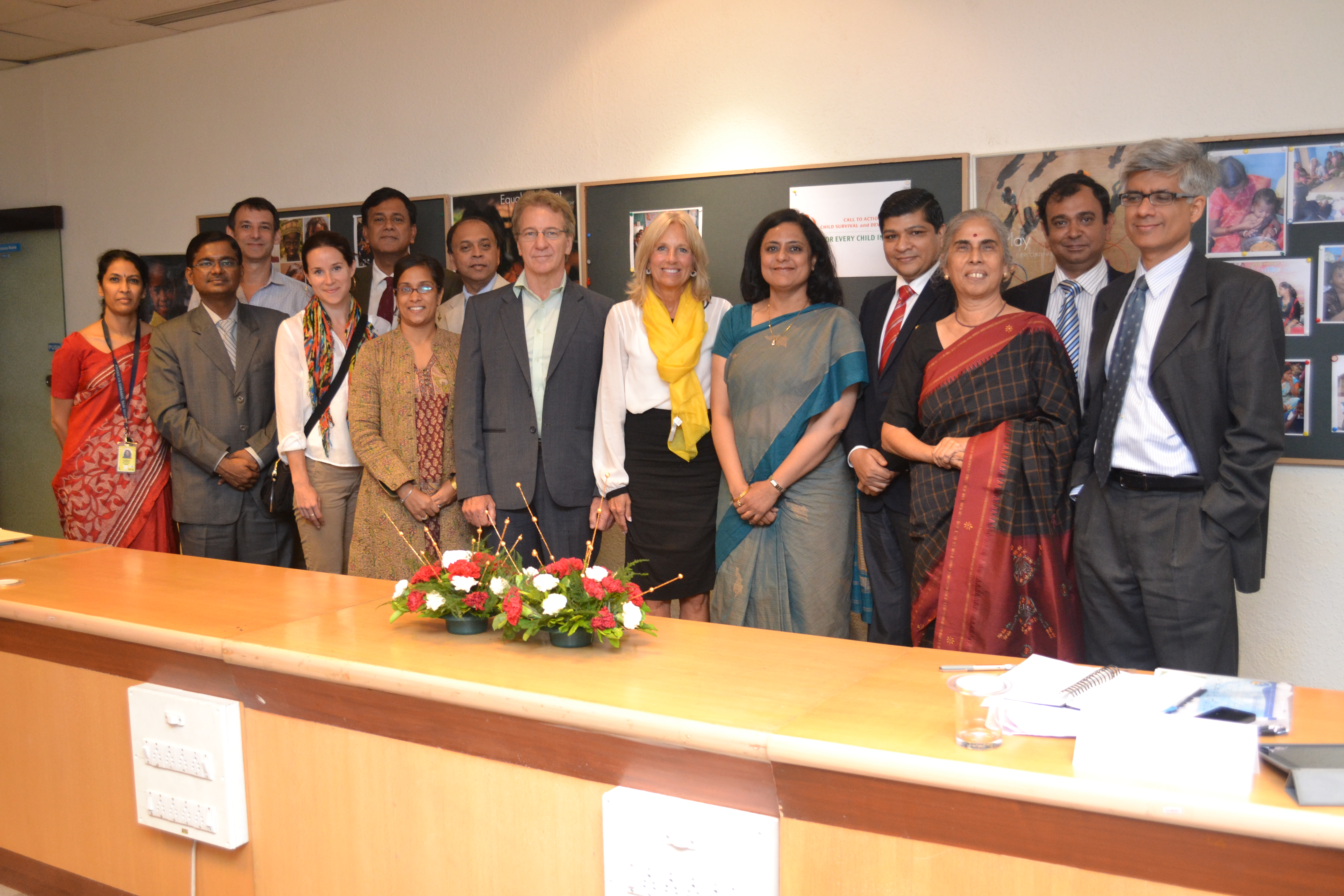
Last June, the United States, India, Ethiopia, and UNICEF hosted the Global Child Survival Call to Action event in Washington, DC. In India, 43% of children under the age of five are underweight and 48% are chronically undernourished. To address this and other causes of child deaths that can be prevented, India issued a national Call to Action for Child Survival and Development to end all preventable child deaths by 2035.
Yesterday I wrote about my time in Kachhpura and how they are working to end malnutrition. Today I attended a roundtable discussion with Government of Maharashtra Officials, USAID, UNICEF, Indian civil society and private sector representatives to learn about their efforts to improve nutrition across the country and to make available other proven health interventions to prevent child deaths, such as immunizations, clean water, and treatment of pneumonia and diarrhea.
As a mom, this is a personal issue for me as no parent wants to see her child go hungry or be sick. I am inspired by how the communities that I have visited have launched into action to tackle this problem. I am heartened to learn of the joint efforts of the Indian government, civil society and private sector in close collaboration with the U.S. and UN Agencies to target children between 0 and 35 months old, one of the most vulnerable groups. I look forward to seeing their continued progress in the future.
After leaving the roundtable discussion, I continued on to The Dilaasa Crisis Intervention Department for Women in Bandra, an area in Mumbai. The center is the first hospital-based crisis center in India for female survivors of domestic violence and came out of a partnership between the Municipal Corporation of Greater Mumbai, a public entity, and the Center for Enquiry into Health and Allied Themes, a private trust. This relationship illustrates how dedicated both the people and the government are to creating a safe space for the victims of gender based violence and to ensuring that this nightmare ends for so many women.
In Hindi, Dilaasa means "reassurance," and it seems that the center has gone above and beyond that mission for each of the 2,000 women it has cared for so far. Dilaasa provides a safe and anonymous space for women to seek support, a promise the women I met with were so appreciative of. The center focuses on empowering these women by helping them understand that the cause of violence is external to them. I could see the power of this approach in my conversations with the center¹s survivors. I am still amazed by the incredible strength of each woman I was able to meet.



